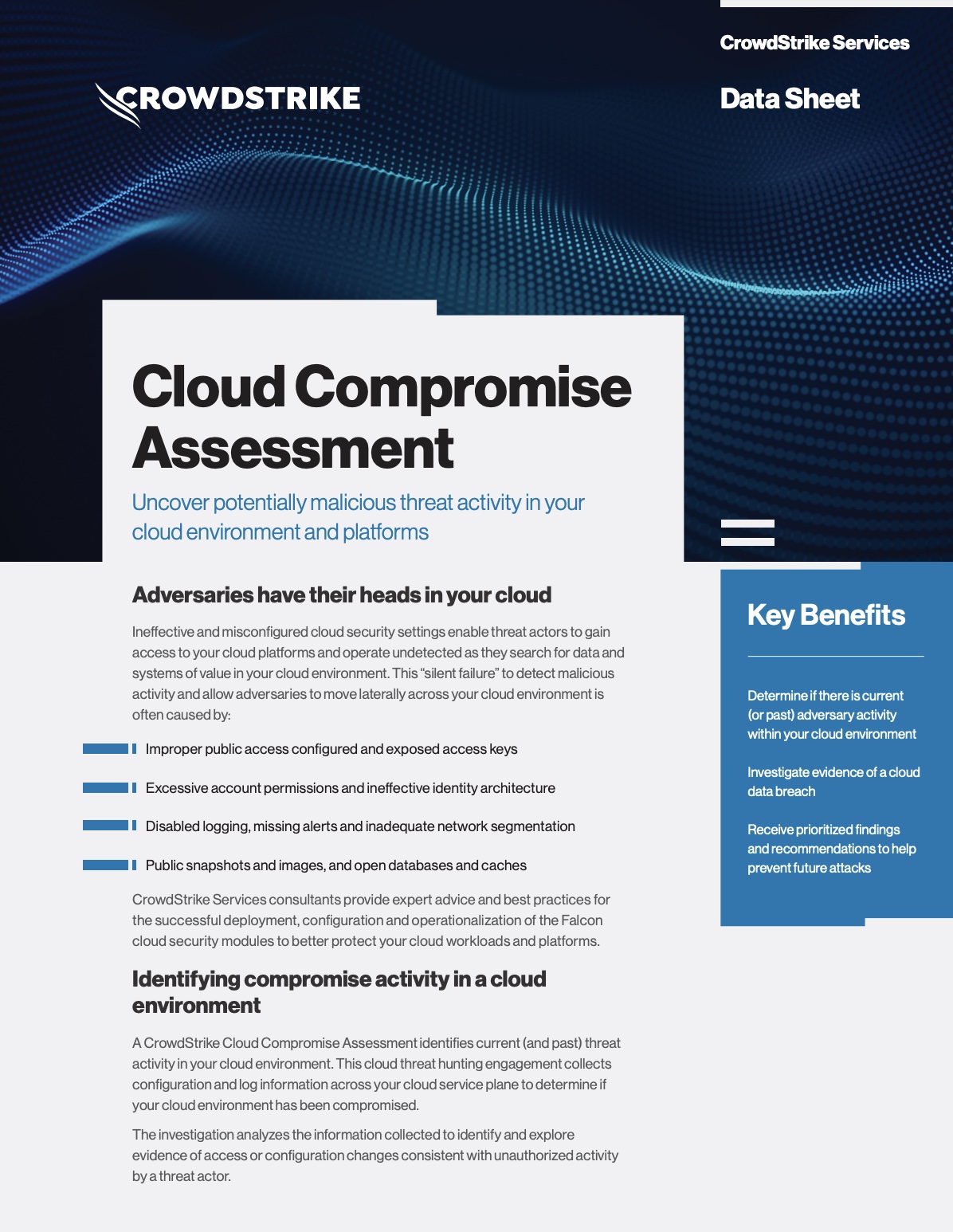What is a cloud compromise assessment?
A cloud compromise assessment is an in-depth evaluation of an organization’s cloud infrastructure to identify, analyze, and mitigate potential security risks. Performing a regular assessment uncovers vulnerabilities and threats early. Assessments are crucial for maintaining a strong security posture. The main goal of the assessment is to uncover any signs of compromise before they can escalate into full-blown security incidents.
Learn More
For a longer look at the topic of general compromise assessments (rather than those specifically for the cloud), read this article explaining what compromise assessment are. Compromise Assessments
A cloud compromise assessment generally involves three key steps:
- Assess: Examine data from endpoints, network traffic, and logs, searching for any indicators of compromise.
- Analyze: Evaluate the data collected to determine whether a compromise has actually occurred. If so, determine the who, why, what, and how of the compromise.
- Act: Implement the necessary steps to remediate the discovered threat and defend against future attacks to improve the organization’s overall security posture.
Performing a cloud compromise assessment is not a simple task. It typically requires a specialized team equipped with the right tools to analyze vast amounts of cloud infrastructure data. To rigorously test their cloud environments for vulnerabilities, many organizations look to a service like CrowdStrike’s Compromise Assessment.
With this foundational understanding in place, let’s consider why cloud compromise assessments are so crucial for modern organizations.

Cloud Compromise Assessment Data Sheet
Download this data sheet to learn how CrowdStrike Cloud Compromise Assessment can identify current (and past) threat activity in your cloud environment.
Download NowWhy are cloud compromise assessments necessary?
With the growing prevalence of cloud-based systems and applications, there has been a corresponding uptick in cyber threats targeting these environments. Threats can come in many forms, including:
- Malware
- Insider threats
- Misconfigured services
- Compromised credentials
By taking advantage of potential vulnerabilities in your cloud setup, these threats can expose your cloud systems to a wide array of risks. Compromised cloud systems can have significant and far-reaching ramifications, including:
- Data breaches
- Business or operations disruptions
- Legal implications
- Financial losses or penalties
- Reputation damage
The gravity of these risks and potential impacts shows why conducting regular cloud compromise assessments is so vital.
After an assessment has been performed, what steps should an organization take in response?
Post-assessment steps
After a cloud compromise assessment, your organization will have a set of concrete actions to take based on the findings. You should spend time making sense of these findings, focusing on understanding the severity and potential business implications of the identified threats. As a result, you might update your cloud security policies or enhance your monitoring capabilities. Though these are just initial steps, they lay the groundwork for a more secure cloud environment moving forward.
Mitigating and eliminating identified vulnerabilities are two priorities. Achieving both might involve taking actions such as:
- Patching software
- Strengthening authentication processes
- Rearchitecting certain aspects of your cloud environment
Though the exact steps to take will depend on the findings, taking action is nonnegotiable.
Continuous monitoring and regularly scheduled cloud compromise assessments are crucial to maintaining a robust cloud security posture. Because cyber threats are constantly evolving, what was secure yesterday might not be tomorrow. As you regularly review and adapt your security measures, you will stay ahead of potential risks.
Next steps for securing your cloud environments
CrowdStrike Falcon® Forensics helps you automate data collection for conducting cloud compromise assessments. By collecting both historic and real-time data, Falcon Forensics unifies and simplifies your data gathering process in preparation for forensic analysis.
In summary, cloud compromise assessments serve as a vital tool for identifying, analyzing, and mitigating potential security risks in cloud environments. Given the surge of cyber threats targeting cloud systems, these assessments are becoming increasingly important. After an assessment is performed, understanding the findings and taking concrete steps for mitigation are crucial for maintaining a strong security posture.
Expert Tip
For enterprises who choose to lean on expert teams for conducting assessments, the CrowdStrike Services team brings the skills and expertise to perform cloud compromise assessments, assisting and advising organizations in taking resulting action.CrowdStrike Cloud Compromise Assessment Services


